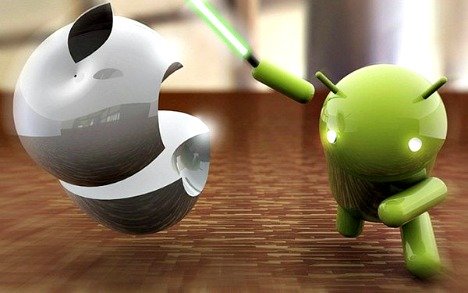How to Make the Switch from iOS to Android
When making the switch from iPhone to Android there is always going to be something that can’t be taken across to the new device. Apps will have to be abandoned (although there will most likely be an Android version available), as well as some of the iTunes functionality and other Apple-specific features. This guide aims to make the switch as easy and painless as-possible, showing how to get most of the important files and data on to the Android smartphone.

Once set up and activated the new Android device, grab the Android device and follow below step-by-step guide.
Step 1:
Google Account
On the Android device, go to Menu > Settings > Accounts & Sync > Add Account > Google. Follow the onscreen instructions to associate the Gmail account with new Android device. Note: If you don’t have a Google account yet, you can create one here.
Step 2:
Contacts
On the iOS device, go to contacts. Mount and connect the iOS device to computer as an external drive using a USB cable and launch iTunes. Select the “Info” tab and check “Sync Address Book Contacts”, and then check “Sync Contacts With” and choose “Google Contacts”. Clicks configures and enter the account information that configured on new Android device. Hit Apply and allow the iOS device to sync.
Step 3:
Calendar and Notes
On the iOS device go to Settings > Mail, Contacts, Calendars. If the Gmail account using isn’t available, add it by going to Add account > Gmail. Go back to mail settings, tap the Gmail account, and turn syncing on for Calendars and Notes. Within a few minutes, the calendar will transfer to Android device. Notes will be sent to Gmail account and filed under a label called Notes.
Step 4:
Photos, music, and videos
For the music, videos, and pictures, you’ll need to mount iOS device onto the computer as an external drive. For the Windows users, open Explorer, locate the appropriate files on the phone and copy them to the new folder on desktop. Mac users, on the other hand, connect the iOS device to computer and open the application called Image Capture. Set a new folder on the desktop as the destination and hit Download All.
Now, on either Mac or Windows, connect the Android device to the computer, open the Android drive, and find the pictures folder. There’s one titled “DCIM”, drag and drop the iOS device photos from desktop to Android pictures folder, and music to Android music folder.
Users may notice that the Android device can’t sync with iTunes, so that users will need an alternative service to load new media onto the device. Google Play is a solid option, allowing users to store up to 20,000 uploaded tracks for free, as well as Amazon Cloud Player, which offers 5GB of space for uploaded tracks at no charge. Or use Spotify.
Step 6:
SMS and voice mail
When transferring SMS messages off the iOS device, My SMS is quite handy. This free app syncs text messages among your various devices—phones, tablets, laptops, and whathaveyou—and is compatible with both Mac and Windows. Simply download the app on both phones, follow the setup instructions and MySMS does the rest.
If there are specific important messages users want to keep, just go to iOS device messages, select the conversation, and hit edit at the top. Tap the messages that want to keep, and then tap Forward. In the recipient field, enter the Google email address, and send.
These are my tips for switchers. What are yours?
Recent Articles
- How To Download HBO Shows On iPhone, iPad Through Apple TV App
- Windows 10 Insider Preview Build 19025 (20H1) for PC Official Available for Insiders in Fast Ring – Here’s What’s News, Fixes, and Enhancement Changelog
- Kaspersky Total Security 2020 Free Download With License Serial Key
- Steganos Privacy Suite 19 Free Download With Genuine License Key
- Zemana AntiMalware Premium Free Download For Limited Time





